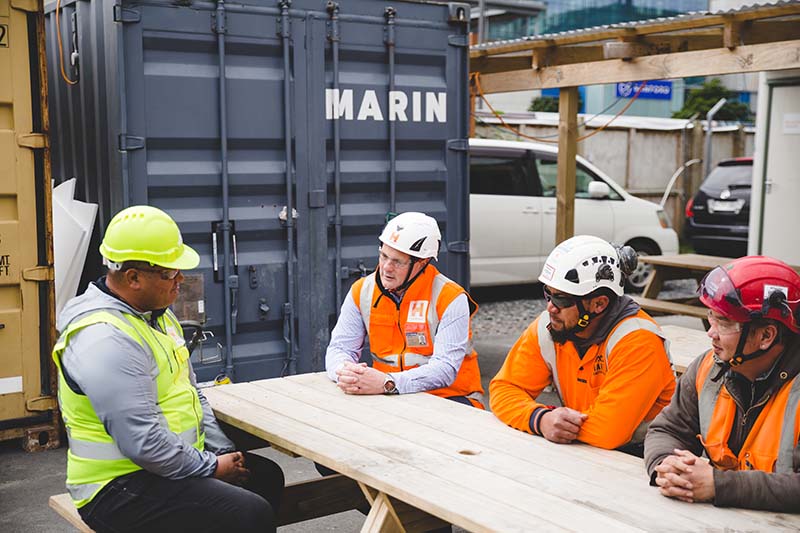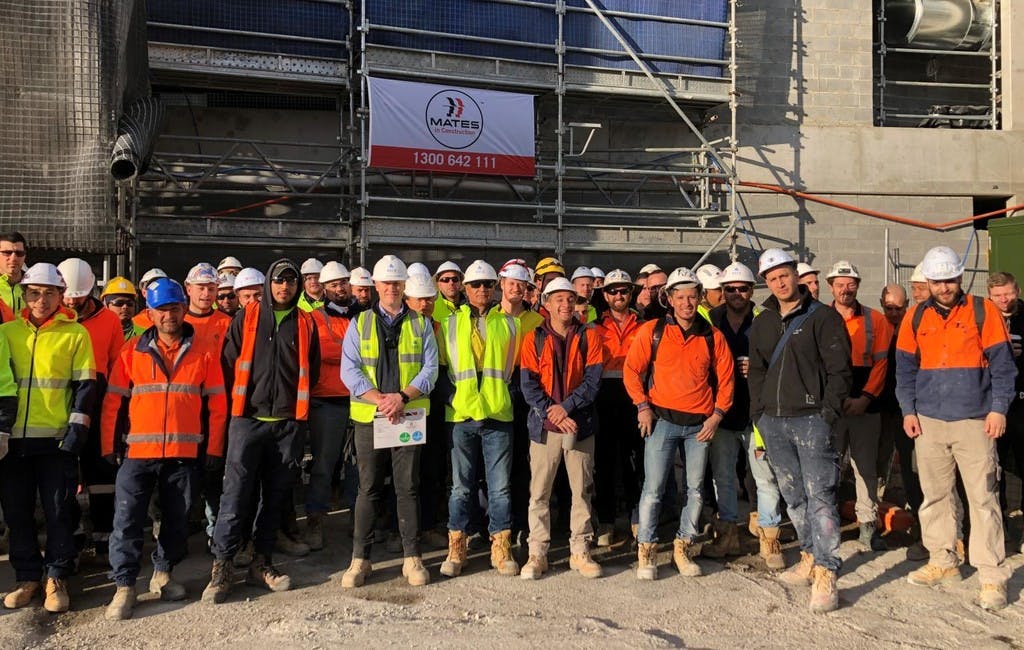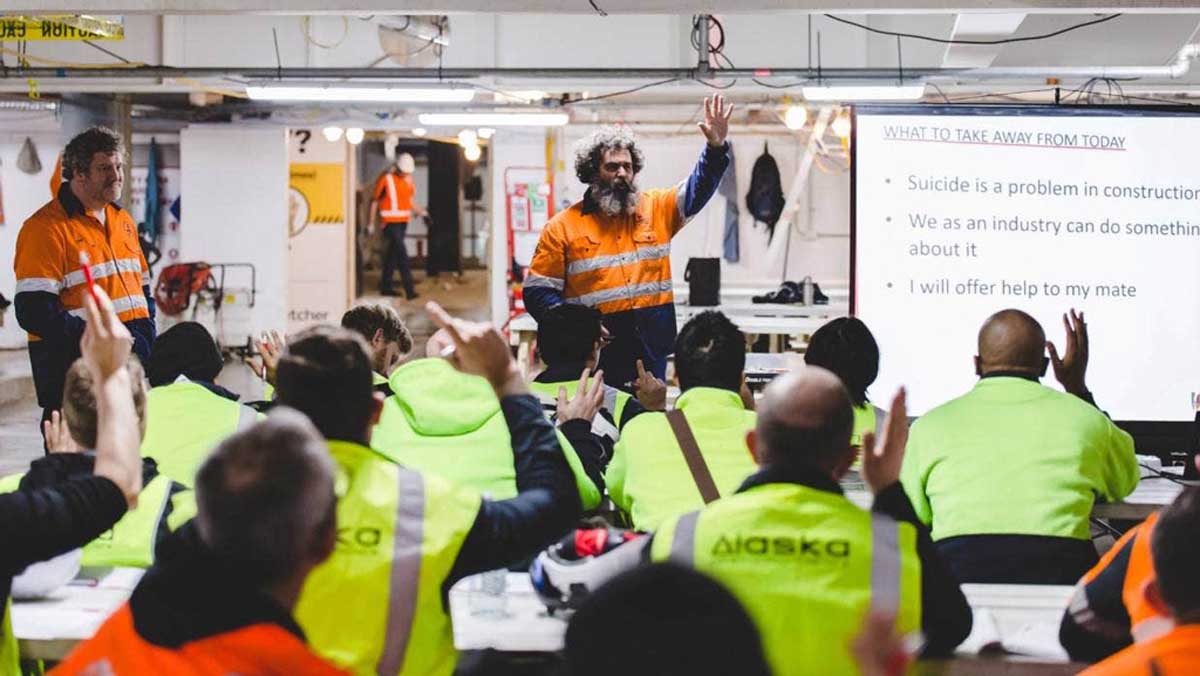The construction sector in New Zealand is clearly a troubled industry. Suicide rates in the sector are shockingly high, with as many as 161 construction workers reported to have died by suicide between 2018 and 2020 (Statistics from the Chief).
In fact, construction shows the highest suicide numbers for any single sector in New Zealand and it’s clear that many workers on the job are struggling with their mental health. Industry participants say this has been an issue for years, but recent attempts to help workers and management talk more openly, isn’t happening fast enough to save lives.
“The culture of the industry – and the nature of the way people are working – is such that it’s contributing to those taking their lives,” says MATES in Construction founder and CEO Victoria McArthur.
“There are real pressures, and loneliness in this sector and that can layer onto other factors, resulting in Mental Distress. And that’s when these workers can get to a point where they feel like their lives can’t go on,” she says.
McArthur says the influencing factors are many and varied and are endemic in the industry.
“Long working hours, stoic behaviors, and societal factors such as the culture of heavy alcohol and drug use, lack of job security, all play a part. It’s a male dominated industry and bullying is a big part of our industry also.”

“These long working hours can start to have an impact on relationships and what’s happening at home, which could then cause someone to turn to drugs and alcohol use as a way of escapism. It’s when they get to the point of mental distress that things start to build up and they don’t know where to go for help,” she says.
Although there’s a lack of good data in the sector research points at two key groups of workers most at risk. Under 25s, specifically our young Maori males and 45 plus European Pakeha males.
And while all sorts of different things can impact the people that are working with our industry, McArthur says it’s also important to look at specific life events that may be happening for them at that time.
“For our young apprentices or laborers, societal factors might include poverty and homelessness. They may be having financial problems, relationship problems, or drug and alcohol use”.
“Or those in middle management such as site supervisors and project managers, they’re under a lot of pressure. There’s always time pressure and they have to keep thinking about the next piece of work, and for some, where will the next job come from. They’re the guys that drive the culture on the site and if they’re under a lot of mental distress, it can impact the way that site operates”.
“Since Covid, we have met with some new problems supply issues and shortage of skilled workers have made these pressures even greater,” she said.
McArthur says that whatever the factors are that drive mental distress, the key actions that an employer or coworker can take are the same workers need to work in an environment where they feel they can speak and be heard.
“Kiwi male stoicism is a constant issue. Most workers don’t feel they can take an hour off to care for themselves – theyll lose pay – and many don’t want the stigma of telling the boss. They’re short staffed so they can’t take a day off. So that work environment is incredibly important for the wellbeing of the worker.”
So, how to build a better environment? Especially given the fractured nature of the industry and the many trades and subtrades that work together, but apart.
McArthur’s organisation, MATES in Construction is one positive example.
MATES in Construction featured as an example of world’s best practice in suicide prevention in a new World Health Organisation (WHO) publication developed to advise and support Governments internationally to implement health strategies.
“We start taking it right back to the basics of “what is self-care?”,” says McArthur.
“And what looking after yourself means for you as a husband or a father. Then we help those that are struggling and reach out to navigate them into appropriate services, and we stay with them on that journey as well”.
“And once we’ve been in contact with someone, we don’t just leave them behind. We take them on a whole journey. And then they go and help others because they’ve been through the process, so we build these networks across our site,” McArthur says.

Structure is a key factor in building a better workplace.
“There might be just a couple of you working alone on a project, or even across a number of large building sites with 500 or 1000 people working on them, MATES is applicable to all environments.”
“The way that MATES works and what is unique about the way that we work is we see our culture and our community as the construction “family”. It doesn’t matter if you’re a sole operator or you’ve a couple of guys in your gang or you’re working on a big construction site.”
“We say, Look guys, the construction industry as a whole can actually do this together and to start to support each other”. It’s not just one guy working on his own. You’re working in a group within a community within your region or within your site.
“That might mean closing the entire site for 45 minutes to allow all the trades to get together to understand and talk about these issues. It’s all about encouraging construction workers to look after each other, seek, offer and accept help when its needed,” she said.
“Our MATES in Construction programme is led by people who have worked in the industry or have real lived experience with mental health. With a predominantly male workforce who may find it hard to reach out for help, our approach breaks down those barriers.”
“What we do through the training element is we make people aware of what suicide looks like in New Zealand. Then what we do is we start to build a connection network across all of the sites.
“We introduce connectors that have got green stickers on their hard hats, and they’re identified as being people you can have a discussion with if you’re struggling. You might not need to tap into some psychological services, but you can have a discussion as a starting point. They know how to keep you safe as they transition you into help.
“So, when we go onto site, we are building the capacity on the site. Once we’ve built that capacity of having these people out there, then those guys actually know how to navigate somebody to help.”
So, is it time for the safety of workers to be built into tenders and contracts?
“Yes, absolutely. Kāinga Ora have already done it. They’ve done it across housing. We should be making sure that these people are safe, psychologically safe, when they’re building those buildings and roads” McArthur says.

